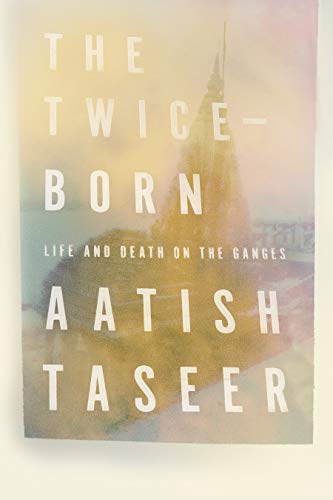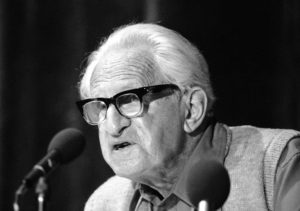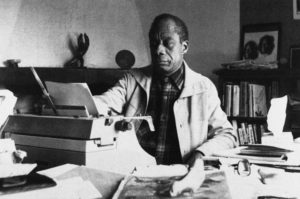Lost in India
In "The Twice-Born," a Pakistani-Indian journalist living in London travels back to India on a personal quest, but is unsure what he is searching for. Needpix.com
Needpix.com
“The Twice-Born: Life and Death on the Ganges”
A book by Aatish Taseer
Aatish Taseer’s luscious passages about India’s many hidden worlds are as moving as his reflections on identity, place, and his search for an elusive “home.” Yet there is a whiff of fraudulence about Taseer. Hints of the impostor shadow him—a double-impostor really, since his deceptions seem designed to fool not only us but himself as well. He accomplishes neither. The odd thing is that his duplicitousness does not alienate us, but pulls us in closer. Somehow, we can’t abandon this trickster.
In “The Twice-Born: Life and Death on the Ganges,” Taseer writes of his journey to India, returning from London, where he currently lives. He grew up in Delhi, the son of a nonpracticing Sikh mother, a prominent journalist, and a Pakistani Muslim father. Taseer’s father and Taseer’s mother had a brief extramarital affair, and shortly afterward his father returned to his wife. His father, Salman Taseer, later became the governor of Punjab in Pakistan. He was assassinated in 2011, after speaking out against the blasphemy laws, which he considered archaic. He described himself to Taseer as a cultural Muslim.
Click here to read long excerpts from “The Twice-Born” at Google Books.
Taseer was raised by his mother and maternal grandparents, who were part of India’s English-speaking upper class. He had very little contact with his father during his formative years. Their few interactions were fraught with tension. Taseer wrote about their relationship in his earlier autobiographical work, “Stranger to History”; he openly criticized his father in the book, dismayed with his father’s more intolerant views and his erroneous proclamations about the Holocaust.
In his new work, Taseer shares with us his intentions:
“My time in the West had given me an outside view of my world in Delhi, robbing my life there of its easy, unthinking quality. I thought I should do something, by way of traveling or learning, that would help me establish a connection with India at large, the country that lay beyond the seemingly impermeable confines of life in Delhi. I wondered if I should learn Sanskrit, the ancient language of India. It was no longer spoken, but, like Latin or ancient Greek, it retained its liturgical function among India’s Hindu majority. I would have had some notion of a vast body of literature in Sanskrit, but, as more an absence than a presence, it was further proof of an intellectual inheritance that had not come down to me. Absences can be suggestive, and I wondered if a voice from the past might serve as a beginning point in my quest to reconnect with India’s history and language. That was why I went to see Mapu, an old friend of my mother’s. He was among the few people I knew who had sought to regain what a colonial education had denied him: he had attempted a version of Frantz Fanon’s ‘return to self.’”
When Taseer explains to Mapu his desire to study Sanskrit in Benares, Mapu is impressed with what he believes to be the young man’s religious zealousness. Taseer’s desire to learn Sanskrit, however, is more of an “attempt to deal intellectually with a country whose reality perturbed me.” Mapu describes Benares as a magical place where one can “see in miniature every major event that had etched itself onto India’s consciousness. The entire history of the subcontinent lay in bits and pieces on its river shore…”—bits and pieces like the British rule that came to India in 1794, and the eventual ascent of Nehru in 1947, two events that Mapu felt robbed India of its Hindu culture. Mapu sends Taseer to a potential guru, Kamlesh Dutt Tripathi, a Brahmin—a social class of priests and teachers—at the top of the Hindu caste system. Brahmins make up less than 10% of India’s enormous population, who mostly live in dire poverty. The Brahmins are considered “twice-born”: once at birth, and again when they are initiated by rite into the ancient vocation of the mind.
Taseer is too timid to approach Tripathi at first, as the great man speaks with other Sanskrit scholars, debating esoteric issues. But Taseer pours himself into his studies, learning the epics, plays, treatises, court poems, and literary analyses that are part of his cultural heritage. He begins to think that perhaps he had been raised with a “passionless aversion to his own culture.” But soon enough, doubts surface. Although it is incredibly stimulating to glimpse the antiquity of a “sacralized form of learning, to witness was not to participate.” The world of ritual was closed off to him: “a break had occurred, and I was on the other side of it.”
Taseer comes to see Tripathi, with whom he was initially so impressed, as inflexible, obsessed with the past, and blind to the contributions of modernity. Tripathi sends him to another Brahmin guide, P.K. Mukhopadhyay. Mukhopadhyay tells Taseer of a student he invited to supper in his home. He fed the student, but was “forced” to ask him to clean his own plate and utensils after eating because he was from a lower caste: “The deed of a past life had left the young man Mukhopadhyay spoke of, spiritually unclean.” Taseer, appalled, confronts Mukhopadhyay about the elitism and racism that he embraces; Mukhopadhyay is unmoved. The Indian constitution has outlawed caste, but it still remains an essential part of life in India. Taseer is not only disillusioned with Mukhopadhyay; he is angry. He no longer sees him as a mystic or someone with access to revelations closed off to him, but rather a privileged man who hides under the umbrella of caste, oblivious to the suffering that surrounds him. Taseer leaves him.
He roams the streets of Benares and is approached by soothsayers, palmists, witch doctors, astrologers, exorcists, and other “holy” men who offer prayers that start to sound like threats. He writes that the streets of Benares have a demonic energy that was “primal, cruel, full of laughter.”
Still uncertain about who he is or wants to be, Taseer returns to New York City and his new husband, a man he met from the American South on a dating app. But he doesn’t tell us much about him, or about his mother, besides how often she was away while he was a child. He discussed his anxieties about his father with multiple therapists. Taseer does mention his maternal grandmother, who delighted him with stories about the Hindu faith, and he recalls that at 5 or 6 he began lighting incense and chanting prayers and offering marigolds to the gods. But it didn’t last long. When Taseer was in India, a religious Brahmin asked him directly whether he believed in God. Taseer said no, and the Brahmin told him that he has no dharma: having no place in the world that is meaningful or righteous. In some ways, Taseer agrees with him.
A recent video on the internet of Taseer speaking at Amherst College about “The Twice-Born” is painful to watch. Taseer reads his prepared text quickly, swallowing his words, and rarely looks up at the students. Fielding the students’ questions, he seems lost and has trouble speaking extemporaneously. He still can’t explain why he went to India and what he was looking for. He has difficulty describing what he believes now. He has trouble defining who he is. He seems nervous. But he also seemed to me to be mourning all that he still could not say and feel—all the emotional wounds he could not confront. And yet, as with his book, he kept me pulled tightly into his orbit despite his fumbling presentation. Somehow, I could not look away.
Your support matters…
Independent journalism is under threat and overshadowed by heavily funded mainstream media.
You can help level the playing field. Become a member.
Your tax-deductible contribution keeps us digging beneath the headlines to give you thought-provoking, investigative reporting and analysis that unearths what's really happening- without compromise.
Give today to support our courageous, independent journalists.







You need to be a supporter to comment.
There are currently no responses to this article.
Be the first to respond.